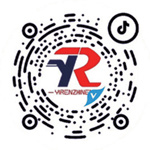What is the relationship between smart factories and automation?
Release time:
2023-10-11
Intelligent factories can be divided into three levels. The first level is an equipment level solution focusing on automation and control. The imported applications are CNC numerical control equipment, as well as PLC, I/O, touchpad and motion control products. The second floor is man-machine interface and monitoring system. The imported applications include HMI/SCADA, integrated monitoring of factory equipment, collection of real-time and historical data, integrated analysis of efficiency and energy-saving control; the third layer is a production management solution, and the imported application is MES/EMI, which provides automatic information on production line work order, feeding and material preparation.

Intelligent factories can be divided into three levels. The first level is an equipment level solution focusing on automation and control. The imported applications are CNC numerical control equipment, as well as PLC, I/O, touchpad and motion control products. The second floor is man-machine interface and monitoring system. The imported applications include HMI/SCADA, integrated monitoring of factory equipment, collection of real-time and historical data, integrated analysis of efficiency and energy-saving control; the third layer is a production management solution, and the imported application is MES/EMI, which provides automatic information on production line work order, feeding and material preparation.
If you start from the perspective of software solutions, the upper layer is a real-time information portal website, and then the intelligent factory performance analysis and production execution, comprehensive quality management, asset management, factory database, graphic monitoring equipment and the editing and control of the bottom layer. These operation platforms can be built according to the needs of the intelligent factory.
The benefits of importing smart factory applications are obvious. Take the LED lamp production line as an example, each LED lamp has dozens of processes, and each process must be allocated. In order to pursue production speed, it may take more than 20 people to assemble, but after importing into the automated production line, an LED lamp can be completed in 7 seconds, and only three people are needed.
However, after the introduction of automation, the design of the production line will also be redesigned. Taking the aforementioned LED lamps as an example, the intelligent factory will make the production line into a font shape because it is necessary to consider the space of the intelligent factory site, the location of the warehouse, how to import and export materials, how to maintain, etc., in order to design the shape of the production line that meets the actual requirements.
The next step is to enter SCADA, which is the Supervisory Control And Data Acquisition. Any platform with system monitoring and data acquisition functions must be matched with corresponding software and hardware to be called SCADA.
The purpose of setting up SCADA is to provide the system equipment for overall monitoring, control, automatic timing recording, printing and querying and providing the real-time operation status of the equipment through the real-time monitoring equipment of the computer. Smart factories can use this to establish long-term equipment maintenance data, effectively use maintenance human resources, and improve equipment maintenance quality and equipment operation efficiency. SCADA can meet a variety of system equipment, such as power monitoring system, air conditioning monitoring system, fire monitoring system, access control monitoring system, process monitoring system, etc.
Another project that is relevant to the application of smart factories is the graph control system. Experts pointed out that in order to succeed in the graphic control interface, it is necessary to first understand that the interface between people and equipment actually exists in the corresponding relationship between the control equipment and the screen graphics. When real-world equipment, sensors or controllers are converted into various objects on the computer screen, they must be completely corresponding. Engineers need a little aesthetic accomplishment to present a situation close to the real world, the controller can display the operation status of the equipment and control the operation of the equipment through the screen graphics.
A complete monitoring system requires the composition of many components. Take the process equipment monitoring system as an example, the process equipment should have sensing and braking devices, and the data should be converted and transmitted to the control system. The control system should at least have the functions of display, recording, adjustment and actuation, and should be processed by the operator according to the data transmitted from the front desk. Therefore, all data must be properly handled when it is sent to the background. If 70% of warnings may be false positives, the monitoring system must be able to make judgments.
In addition to the aforementioned system platform, the hardware architecture also needs to be properly considered in order to build a smart factory. The first is the basic requirements of online, communication protocols should be as far as possible to choose the existing market, as far as possible to reduce self-development, so as to avoid problems between devices online.
The second is the selection of instrument and control facilities. The current interface of instrument and control facilities is very diversified. In addition to the current prevailing Ethernet, the past RS232/422/485 is still in use. In fact, smart factories are not necessarily Ethernet, because considering the construction cost, the past investment does not have to be abandoned, but different interface of I & C facilities will affect the configuration of communication lines, including equipment, distance, speed and cost, etc. When introducing solutions, factories should make a good choice planning.
In the selection of computer equipment, including the number and configuration of online computers, working environment, computer specifications and peripheral devices, should be fully considered. Experts believe that the key to the selection depends entirely on the tolerance of the system. The server must be used. Don't choose cheaper computer equipment because of saving procurement costs, because once the selection is wrong, the equipment often fails or goes down, and the maintenance cost may not be cost-effective.
As for the consideration of monitoring network architecture, the items to be considered include task allocation of workstations, network architecture planning, network traffic control and network security considerations. In architecture planning, it can be considered in accordance with the direction of control responsibility division, human-machine interface planning and network function coordination.
Taking control responsibility as an example, it can be divided into controllers and graph-controlled computers. The former pays attention to real-time, high reliability, and is suitable for low-order logic/analog control, while the latter requires powerful data processing capabilities and is suitable for high-order control. As for how many controllers are installed in each switch, it depends on the speed requirements.
In terms of man-machine interface planning, the concept of human factors engineering must be introduced. Whether it is the usage habit or the size of the figure, it can conform to the usage habit and site conditions, such as the direction, size and color of the knob. To meet the requirements of intuition, simplicity and error prevention, other items such as operation process, display mode and safety control should also be mainly considered in conformity with user habits.
As for the coordination of network functions, it is suggested that the commonly used Windows built-in network functions should be coordinated, and efficient TCP/IP layer-to-layer communication should be adopted to allow multiple computers to monitor and control each other, so as to achieve the purpose of resource sharing and mutual backup.
MES is often the application that smart factories need to import. If too many problems occur in the production process of smart factories, such as downtime, production loss, too much rework, wrong delivery time, failure to meet the requirements of industry standards, material shortage, inability to track the use of raw materials, customer complaints and product recalls, the necessity of importing MES may be seriously considered.
Because of the above problems, managers need to make corresponding strategies. When encountering various problems, MES is the only way to know why and how to improve them. For example, when receiving urgent orders, if the information from top to bottom can be well integrated, managers can know in a short time whether the relevant materials are sufficient and judge whether the orders can be accepted.
Due to the increasing demand for energy saving and carbon reduction, smart energy saving systems have also become a common import project for smart factories. Taking the energy management system as an example, from collection and measurement, monitoring and analysis, control management, removal to energy saving, it is actually necessary to try to integrate independent systems, such as power and lighting monitoring, air conditioning monitoring, parking management, etc., in order to achieve the purpose of energy saving, carbon reduction and thus cost reduction.
Related News







